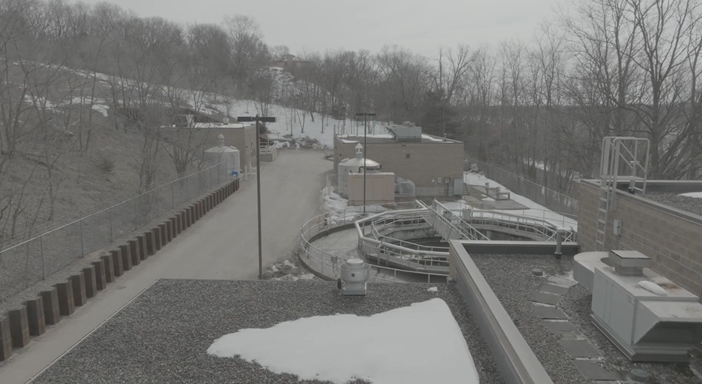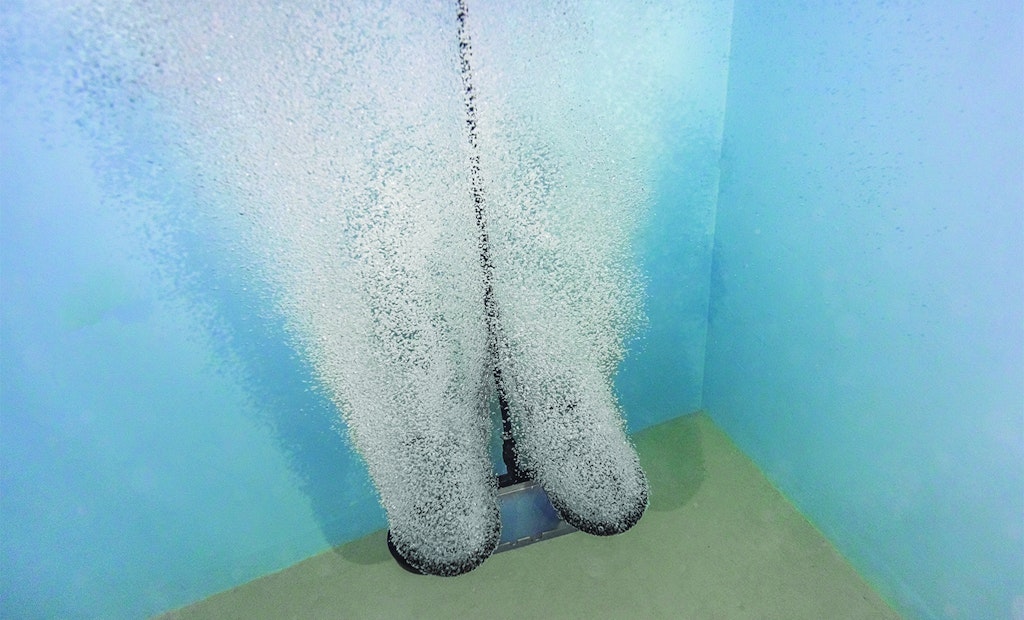Interested in Dewatering/Biosolids?
Get Dewatering/Biosolids articles, news and videos right in your inbox! Sign up now.
Dewatering/Biosolids + Get AlertsWastewater lift stations serve as the backbone of municipal sewage systems, quietly ensuring the seamless movement of wastewater from lower to higher elevations where gravity alone proves insufficient. Despite their crucial role, these stations grapple with a persistent nemesis: grease buildup. This accumulation poses a significant threat, causing operational disruptions and environmental risks when left unattended.
Historically, lift station operators have turned to chemical treatments as the primary means of managing grease buildup. However, while effective to some extent, these methods carry inherent drawbacks. Environmental concerns, regulatory compliance issues, and the ongoing operational expenses associated with chemical treatments have spurred the quest for more sustainable alternatives.
However, a new technology offers hope for water managers in search of options. The HydraForce Lift Station Agitator, produced by Kasco, offers a transformative approach to grease management, harnessing the power of movement and agitation to combat buildup effectively. By eschewing chemical interventions, HydraForce mitigates environmental impact while alleviating regulatory burdens and reducing long-term operational costs.
Over the past year, HydraForce has been tested in four U.S. communities — and the results have been promising.
A greasy situation transformed
In Farmers Branch, Texas, Director of Public Works James Ryan Sartor faced mounting grease issues amid rapid urban development. A sustainable remedy was needed.
"We had to upgrade to handle the increased flows,” Sartor says, “and as these new additions to the city were being occupied, we noticed the lift station was developing a grease issue."
Sartor had recently learned about HydraForce from Axis Construction, a partner organization. Recognizing the need for change, Sartor decided to try the mixing system as an experimental solution.
“After examining its design and construction,” he says, “I talked with Axis about installing the device in a lift station wet well for grease remediation."
The implementation of the HydraForce Lift Station Agitator yielded transformative outcomes. "By early May, we started to experience amazing results," Sartor recalls. "The station was staying very clean, the water was clearer, and there was far less odor." The agitator's ability to mix and agitate the FOG proved instrumental in preventing accumulation, ensuring uninterrupted lift station performance.
Moreover, Sartor highlights the significant cost savings and operational efficiencies achieved by using HydraForce. "Our chemical treatments had been costing us thousands of dollars a year. We now perform our standard weekly inspections of this site and have yet to experience a need for grease removal since installation."
From ‘matting’ to maintenance ease
Rockwall, Texas, also confronted enduring issues with grease buildup in its lift stations. Shon Bellah, production technical supervisor for the city, described the problem of “matting” — fat that congeals in a layer on the surface of wastewater in tanks. The fatty mats, which can be several feet thick, pose a severe clogging risk for water treatment facilities. And they are extremely difficult to remove.
Bellah also opted to try HydraForce as a preventive force against grease development. He noticed an impact immediately.
"Before HydraForce,” he says, “we would treat our sewage with chemicals like Alkegen, and even then we had to vac the matting out every Friday. Not only did we have to pay for the chemicals, there were a lot of additional related time and human costs. It would take four or five people probably two to three hours of work to bring in the utility truck, vac the stuff out, dump it and wash it. But when we got the aeration device in, it helped out a lot.”
Bellah noted agitating the water to eliminate greasing reduced manual labor and enhanced operational efficiency. In fact, the implementation of HydraForce revolutionized Rockwall's lift station maintenance practices. Bellah highlighted a significant reduction in the need for the weekly cleanings that had previously consumed those valuable resources. “We installed the HydraForce in September 2022, and since then, we haven't needed to vac the system at all. In fact, the first time we vac'ed it was February 2024. It's been good, to say the least.”
HydraForce not only alleviated the burden of manual labor but also freed personnel to focus on other essential tasks, streamlining operations and optimizing resource allocation within Rockwall's wastewater management framework.
“Everything’s running smooth like it’s supposed to. It just takes one big thing off your plate so you can focus more on your daily routine,” Bellah says. “And it frees up the truck in case there is an actual external problem or emergency.”
Peace of mind and environmental stewardship
Randy Worthen is the water operations supervisor in Keller, Texas, a city of 46,000 that has no fewer than six lift stations — a high number for its size. Worthen had been using chemicals and bacterial treatments to combat greasing. Like his counterpart in Rockwall, Worthen found the frequent need to manually break up matting and remove it from his stations a drain on resources.
Worthen also hailed HydraForce as a game-changer in his city’s wastewater management approach. “I would say with no exaggeration, it's a 99% improvement,” he says. “It's a major, major improvement."
HydraForce's implementation ushered in a new era of efficiency and sustainability for Keller's wastewater infrastructure. As it had in Rockwall, Worthen notes HydraForce has virtually eliminated the need for chemical treatments and manual cleanings, marking a significant departure from traditional maintenance practices. “We use no chemicals anymore. None whatsoever.”
Beyond operational enhancements, Worthen says, HydraForce's impact extended to environmental stewardship, mitigating the risks associated with lift station failures and overflows. He underscored HydraForce's pivotal role in safeguarding Keller's ecosystem and public health. After all, in Keller, more lift stations meant more opportunities for danger to the community or the environment should any facility experience clogging that shut down operations.
“For me,” Worthen says, “it’s about more than just making our workload easier. It’s about peace of mind.”
Dramatic reduction in cleaning frequency
In Prescott, Wisconsin, Matt Holman, a wastewater and water operator in the city’s Public Works/Utilities Department, emphasized the critical role of HydraForce in addressing the buildup of FOG, particularly in lift stations serving high-density restaurant areas.
Holman stresses the significance of HydraForce's impact, stating, “Prescott's been using the HydraForce diffusers in our main lift station for a couple of months now, and we have seen a drastic change in our use of cleaning services.”

HydraForce's implementation in Prescott marked a transformative milestone in their wastewater management strategy. Holman underscored the tangible benefits of HydraForce, highlighting its instrumental role in reducing cleaning services and saving valuable time and resources. “You just pump the lift station down and it probably takes about 10 minutes, versus 45 minutes to an hour before.”
The adoption of water agitation treatment not only streamlined operational processes but also ensured uninterrupted wastewater flow, mitigating the risk of potential disruptions. The new tool is now playing a vital role in Prescott's wastewater infrastructure, offering an effective solution to combat FOG buildup and uphold operational efficiency in lift stations serving vital community sectors.
These narratives from Farmers Branch, Rockwall, Keller and Prescott serve as compelling testimonials to the promise an innovative technology like HydraForce has for reshaping conventional wastewater management practices and philosophies. Through its innovative mixing technology, HydraForce not only mitigates grease buildup but also redefines operational efficiency in lift stations, embodying a sustainable approach to wastewater treatment.
As James Ryan Sartor of Farmers Branch notes, "The HydraForce Lift Station Agitator not only eliminated the need for chemical treatments, it also resulted in significant cost savings and operational efficiencies."
In an era defined by increasing environmental consciousness and the imperative for sustainable practices, the emergence of such technologies marks a pivotal moment in wastewater management. As municipalities strive to navigate the complexities of modern infrastructure challenges, tools like HydraForce hold the promise of cleaner, more efficient wastewater systems, now and in the future.
Visit the Kasco Marine Storefront






